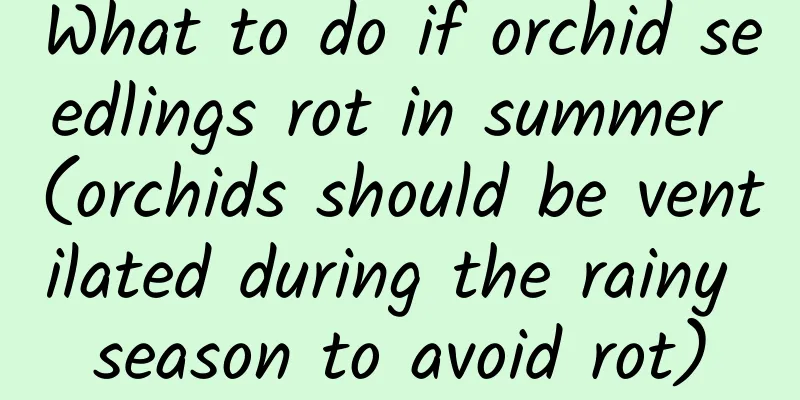What to do if orchid seedlings rot in summer (orchids should be ventilated during the rainy season to avoid rot)

First, the treatment of seedling rot caused by orchid root damageIf the tips of the leaves of new seedlings are burnt or turn yellow, it means that the roots of the orchid in the pot are damaged. The main reasons are: the planting material is compacted and not breathable, the root breathing is blocked due to lack of oxygen, the air circulation is poor, and the water supply is improper . When encountering rotten seedlings in this situation, it is necessary to repot in time, remove the diseased area, sterilize and disinfect, dry the wound, use new planting material to replant, control the moisture, increase environmental ventilation, and keep the planting material slightly moist and dry. Secondly, the treatment of physical damage to orchid seedlingsDue to the blockage of leaf veins caused by excessive pressure on the leaves, the compressed parts of the leaves will gradually turn yellow; the leaf tips cannot recover after being broken, and the creases are too deep to resume growth; the leaves are torn from the middle starting from the tip, etc. The emergence of these problems is all physical damage to the orchid seedlings. Once discovered, the local damage should be pruned immediately. Or the position of the orchid pot should be changed to make the space for the orchid seedlings to grow sparse to avoid further damage . Again, rotten seedlings caused by poor cultivation managementFor example, if the outer bracts of an orchid seedling turn yellow and fall off, an orchid lover with a little cultivation experience can tell at a glance that the cultivation method is wrong. Generally speaking, the incomplete outer bracts of orchid seedlings reflect that the planting material in the orchid pot is buried too shallowly, or the planting material on the pot surface is too coarse, or there is insufficient water supply in the pot, or at least the upper half of the planting material surface is too dry, and the roots are shriveled due to the influence of drought. The treatment of this phenomenon is not restricted by time or season. Just identify the problem and deal with it in a timely manner. In short, to avoid the phenomenon of new orchid seedlings rotting in summer, more attention should be paid in daily maintenance and management. Environmental ventilation, plant material ventilation and drainage, orchid cultivation methods, and orchid pot placement should all be checked in a timely manner , and any problems found should be dealt with immediately. This will help reduce the incidence of summer seedling rot. |
<<: Planting methods and precautions for Cosmos (how to care for Cosmos after germination)
Recommend
How to grow fuchsia
1. Soil If you want it to grow vigorously, you ne...
How to propagate Tiger Eye Dieffenbachia
Bulb division propagation of Ornithogalum Tiger e...
Cultivation methods and precautions of branched apricot
1. Maintenance methods 1. Temperature: It is suit...
Why does asparagus fern turn yellow?
1. Causes 1. Improper use of water will cause its...
Throw some of it into the water, the roots will be thicker than radishes, and all the yellow leaves will disappear!
Copper coin grass plus activated carbon Many flow...
How long is the life span of a forsythia tree? When does it start to bear fruit?
1. How long is the life span of the Forsythia tre...
Dendrobium officinale planting technology
1. Planting method The best time to plant Dendrob...
How to make lemon seeds germinate quickly? How long does it take for the seeds to germinate?
Lemon Seed Germination Method Step 1 : Select a r...
How to care for mountain roses during dormancy
1. When is the dormancy period? Generally, it goe...
What to put in water to make green radish grow well
1. Nutrient solution If you want the plant to gro...
What is longevity vegetable?
What is longevity vegetable? Longevity vegetable ...
What are the main varieties of lilac?
Syringa The plant height is about 3 to 7 meters. ...
Can Mimosa be placed indoors?
1. Can it be placed indoors? It is best not to pl...
What to do if you water too much coconut water
Too much water on the rich coconut Judgment : If ...
Pomegranate pollination time and method
Pomegranate Pollination Pomegranate pollination i...









